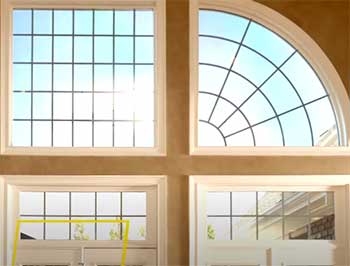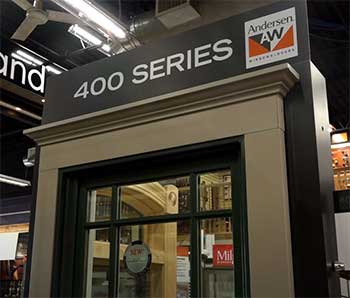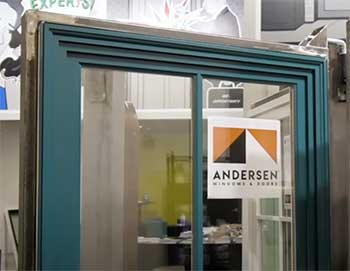When it comes time to replace the windows in your home, two big names often come up: Tri-State and Andersen. Both companies have been around for decades and offer a wide selection of window styles and materials.
So which one is better for your home renovation or new construction project?
In this comprehensive guide, we’ll compare Tri-State and Andersen windows side-by-side, looking at factors like efficiency, durability, warranties, styles, prices and more. Our goal is to provide an objective overview to help you make an informed decision when choosing new windows.
A Brief Comparison Table
| Feature | Tri-State | Andersen |
| Frame Materials | Vinyl, aluminum, wood | Fibrex, Finelight wood |
| Glass Technology | Standard Low-E, argon | High-Performance Low-E4, layered |
| Efficiency Ratings | Good, meet Energy Star | Excellent, Passive House options |
| Warranties | 10-20 years | 20-40 years on glass and wood |
| Installation | Various contractors | Trained Master Installers |
| Styles | Wide selection | Wider selection, customization |
| Prices | Affordable, $350-$500 | Premium, $450-$650 |
| Overall Quality | Very good | Excellent |
Key Differences Between Tri-State And Andersen Windows
- Efficiency and Performance

One of the most important factors when selecting new windows is efficiency and overall performance.
Better insulating windows can keep your home more comfortable all year long and also save substantially on energy bills.
Both Tri-State and Andersen offer high-performance window options.
Most of their window lines meet or exceed Energy Star requirements for U-factor and Solar Heat Gain Coefficient (SHGC).
Some lines are even Passive House certified.
U-factor measures how well a window prevents heat from escaping. Lower U-factors (around 0.20 to 0.30) indicate better insulation.
SHGC measures how well a window blocks heat from the sun. Lower SHGCs (0.20 to 0.40) reduce overheating in summer.
Air leakage indicates how much outside air infiltrates through cracks in the window assembly. Lower air leakage (0.1 to 0.3) improves efficiency.
Many Tri-State and Andersen windows have similar ratings for U-factor, SHGC and air leakage. Double paned windows with low-e coatings, argon gas fill and insulated spacers can achieve U-factors around 0.27 to 0.29. Upgrading to triple pane boosts efficiency even more.
Andersen has two ultra high-performance window lines – A-Series and Passive House – with U-factors as low as 0.16. Tri-State’s best is around 0.20. So Andersen edges out Tri-State slightly when it comes to maximum efficiency.
Advantage: Andersen
- Materials and Durability
The materials used in window construction impact both durability and long-term performance. Key areas to compare are the frame, sash and glass.
Frames

Tri-State offers vinyl, aluminum and wood frame options.
Vinyl is low maintenance but can be prone to expansion/contraction.
It also doesn’t offer the best thermal performance.
Wood requires frequent repainting but has excellent insulation properties.
Aluminum is very durable but conducts heat more readily unless thermally broken.
Andersen has two main frame materials: Fibrex (fiberglass reinforced vinyl) and their proprietary Finelight wood (acetylated pine). Both are designed for superior strength, stability and insulation versus conventional vinyl or wood.
Advantage: Andersen for proprietary composite materials.
Sash
The sash refers to the moving parts of the window like the bottom and top sashes of a double hung. Tri-State uses vinyl, aluminum or wood sashes matching the main frame. Andersen Finelight windows have a Fibrex exterior with pine wood interior. Their Narroline windows feature an all-Fibrex sash.
Advantage: Equal since both offer durable sash options.
Glass
Most Tri-State and Andersen windows are available with top performing Low-E coated glass with argon fill. This blocks UV rays while improving insulation. Both also offer laminated glass for impact resistance and sound dampening.
One difference is that Andersen uses thicker, heavier glass for better durability and rigidity. Their High-Performance Low-E4 glass transmits less solar heat than competitive brands.
Advantage: Andersen for advanced glass technologies.
- Styles and Configurations
No matter what style your home calls for, both Tri-State and Andersen have broad product lines encompassing all the most popular options.
Double Hung – Both excellent choices with tilt-in sashes for easy cleaning.
Casement – Offered in single, double or triple configurations with hardware that allows wide opening vents.
Gliders – Horizontal sliding windows in two, three or four-lite styles.
Specialty – Unique shapes like circles, arches, triangles, trapezoids and more. Tri-State uses Flexi-Frame technology while Andersen has Architekt line.
Awning – Hinged at top and opening outward. Available from both brands.
Bay and Bow – Multi-lite combinations that project outward. Tri-State FlexiBays vs. Andersen’s BayForm.
The one area where Andersen pulls ahead is customization. Their Architectural Collection includes one-of-a-kind designs. And their online visualizer tool lets you preview windows in your actual home. Tri-State doesn’t offer the same degree of modification and personalization.
Advantage: Andersen for unparalleled customization.
- Warranties and Certifications
The warranty coverage provides peace of mind that your investment will stand the test of time. Both Tri-State and Andersen back their products with strong warranties.
Tri-State Warranties
- 20 years on vinyl components
- 10 years on moving parts and screens
- 10 years on glass seal failure
- Lifetime limited warranty offered on some products
Andersen Warranties
- 20 years non-prorated on glass seal failure
- 10 years on manufacturing materials and workmanship
- 20/10 warranty (20 years non-prorated, 10 years on labor) on Fibrex components
- 40/10 warranty on Finelight wood windows and doors
The key difference is that Andersen’s warranties are longer for certain components like wood frames and glass. They also cover more of the repair labor cost.
Both companies offer optional extended warranties for purchase. And their products hold certifications from the American Architectural Manufacturers Association (AAMA) for water infiltration resistance, air leakage and durability.
Slight Advantage: Andersen for superior warranty terms.
- Installation and Replacement Process

Proper installation is crucial for ensuring windows operate smoothly and seal tightly.
Both Tri-State and Andersen require certified installers to carry out the replacement process.
Tri-State uses independent, locally licensed contractors.
Andersen has their own network of “Master Installers” who exclusively install Andersen products.
These technicians undergo extensive training through the Andersen Master Installer Program.
The Master Installer network gives Andersen an edge when it comes to quality control and support. Their team handles the entire window replacement process including sales, measurement, installation and warranty claims. Tri-State relies on various contractors who may not all follow the same exact procedures.
Advantage: Andersen for installation experience.
- Cost and Value Comparison
In terms of upfront purchase price, installed Andersen windows are 20% to 30% more expensive on average versus Tri-State. But Andersen’s superior materials, efficiency, warranties and installation network help justify the higher investment.
For example, a 28″ x 48″ double hung window might cost:
- Tri-State: $350 – $500
- Andersen: $450 – $650
However, Andersen windows should last longer with less maintenance required. And you’ll recoup some added cost back in energy savings.
You can also find Andersen clearance specials, factory sales and other discounts that help make their windows more affordable. Tri-State runs promotions as well.
Overall, Andersen offers a good balance of value for what you pay. While less expensive than brands like Marvin, their quality exceeds lower-end vinyl or builder-grade windows.
Frequently Asked Questions (FAQ)
Some brands comparable to Andersen in terms of quality are: Pella, Marvin, Milgard, JELD-WEN, Simonton, etc.
These companies offer similar top tier window materials, warranties, efficiency ratings and styles as Andersen. They are all solid mid-range to high-end options.
According to many reviews and product comparisons, the makers of the best residential windows are: Andersen, Marvin, Pella, Milgard, etc.
Key factors that make these brands stand out include innovative engineering, high-quality materials, energy efficiency, durability, warranties and overall value.
Both Pella and Andersen are excellent window brands known for craftsmanship and performance. Choosing between them really comes down to your specific needs and priorities.
Some differences that may help decide:
Efficiency – Andersen has slightly better max U-Factors
Warranties – Andersen offers longer coverage on wood and glass
Price – Pella tends to be a little more affordable
Styles – More unique offerings from Andersen
Installation – Andersen Master Installers vs. Pella certified contractors
Overall, you can’t go wrong with either brand. Andersen has a slight edge in some areas, but Pella also makes an outstanding window.
There are a few reasons why Renewal by Andersen replacement windows come at premium prices:
Materials – Fibrex composite and Finelight woods are exclusive to Andersen and more costly to produce.
Efficiency – Their high-end triple pane windows offer superior insulation.
Warranties – industry leading 20-year coverage and skillfully handled by their team.
Installation – only Master Installers are used who receive extensive training.
Brand prestige – the Andersen name carries esteem as a window pioneer.
While you pay more upfront, the added cost goes toward top-end materials, efficiency, reliable installation, and comprehensive warranties – all of which provide long-lasting value.
Final Thoughts
Based on our in-depth comparison, Andersen windows are the better choice if your budget allows. Key advantages include:
- Superior materials like Fibrex and Finelight woods
- Industry-leading energy efficiency ratings
- Excellent durability and weather-tightness
- Comprehensive warranties for added peace of mind
- Large selection of styles with customization options
- Professional network of certified Master Installers
However, Tri-State is still an excellent mid-range window with good performance at a more affordable price point. Their strengths are solid warranties, expansive style selection and smooth operation.
Whichever direction you choose to go, investing in new energy efficient windows from brands like Andersen or Tri-State is sure to enhance your home for years to come.

